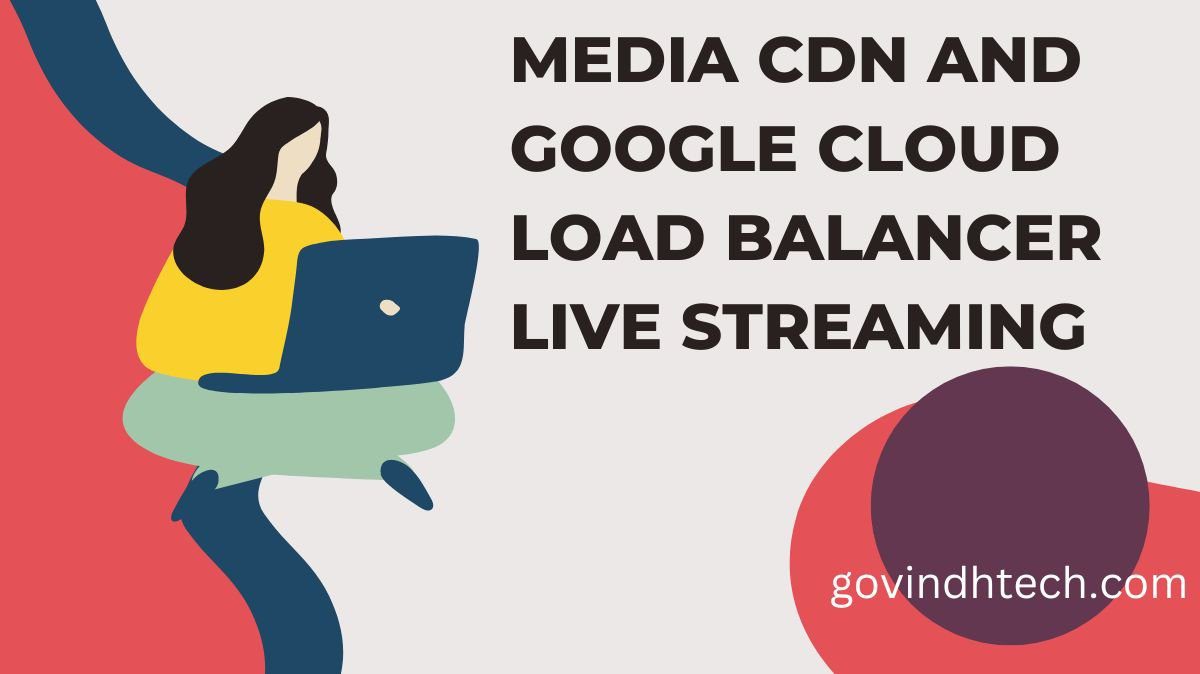Media CDN for Streaming
For Live Streaming applications to provide end users with a high-quality experience on their devices, there must be low latency and continuous streaming. Live stream rendering delays can cause poor video quality and video buffering, which can drive away viewers. Your content delivery network (CDN) infrastructure needs to be dependable in order to provide high-quality live streaming.
A content delivery network (CDN) infrastructure called video CDN is made to distribute streaming video around the world with minimal latency. Notably, Media CDN makes advantage of YouTube’s infrastructure to deliver huge files quickly and reliably to consumers and to bring live and on-demand video streams closer to them. As a content delivery network (CDN), it helps users who are located distant from the origin server by delivering material to them based on their location from a geographically distributed network of servers. This helps to enhance performance and minimize latency.
Whether the Live Streaming application is hosted on-site, in Google Cloud, or in another cloud provider, this blog examines how live-streaming providers might use Media CDN architecture to better provide video content. No matter where the live-streaming infrastructure is located, media CDN can be used to render streams when it is linked with Google Cloud External Application Load Balancer as the origin. To further guarantee a high-quality watching experience, Media CDN can be configured to survive the majority of disruptions or outages. Continue reading to find out more.
Real-time broadcasting
The act of sending audio or video content in real time to broadcasters and playback devices is known as live streaming. Applications for Live Streaming often include the following elements:
The encoder transmits the stream to a packager after compressing the video to a variety of resolutions and bitrates.
Packager and origination service: Converts transcoded media files into various file formats and saves video clips for later rendering using HTTP endpoints.
CDN: Minimizes latency by streaming video segments straight from the origination service to playback devices all around the world.
CDN for media
Broadly speaking, Media CDN is made up of two crucial parts:
Edge cache service: Allows route configurations to direct traffic to a certain origin and offers a public endpoint.
Set up a Cloud Storage bucket or a Google External Application Load Balancer as the origin for the Edge cache.
The architecture shown in the above image demonstrates how Media CDN can integrate with Application Load Balancer to serve a live stream origination service that is operating on-premises, in Google Cloud, or on an external cloud infrastructure. Application load balancers facilitate advanced path- and host-based routing to connect to various backend services and enable access to many backend services. Because of this, live stream providers are able to cache their streams via Media CDN closer to the viewers of the live channels.
The various backend services that load balancers offer to enable communication across infrastructure are as follows:
Internet/Hybrid NEG Backends: Establish a connection with an origination service that is live-streaming and operating on-site or through another cloud provider.
Managed Instance Groups: Establish a multi-regional connection to a live-streaming origination service hosted by Compute Engine.
Zonal Network Endpoint Groups: Establish a connection with the GKE-based live-streaming origination service.
Catastrophe recovery (Original/Failover)
Planning for disaster recovery is crucial to guard against zonal or regional failures, as any interruption to live stream flow might impact viewing. with order to aid with disaster recovery, Media CDN offers primary and secondary origin failover.
Media CDN with an Application Load Balancer origin that provides failover across regions is seen in the above figure. In order to accomplish this, two “EdgeCacheOrigin” hosts with distinct “host header” values are created and pointed to the same Application Load Balancer. The host header on each EdgeCacheOrigin is configured to take on a certain value. Based on the value of the host header, the Application Load Balancer routes requests for live stream traffic using host-based routing.
The Application Load Balancer is triggered when a playback device sets the host header to the primary origin value and requests the stream from Media CDN. After examining the host header, the load balancer routes the traffic to the main live stream origination service. The failover origin rewrites the host header to the failover origin value and delivers the request to the application load balancer in the event that the primary live stream provider fails. A secondary live stream origination service located in a separate zone or region receives the request from the load balancer after it has matched the host.
In summary
A crucial component of the ecosystem for live streaming, media CDNs help to guarantee quality, lower latency, and enhance performance. They examined how Google Media CDN may be used by live stream applications in a variety of architecture and environment types in their post.


[…] Carlo on Google Cloud data observability […]
[…] the data it needs to understand gamers and keep them coming back for more by collaborating with Google Cloud and Aiven on Google Cloud. While service dependability is important (a smooth experience determines […]